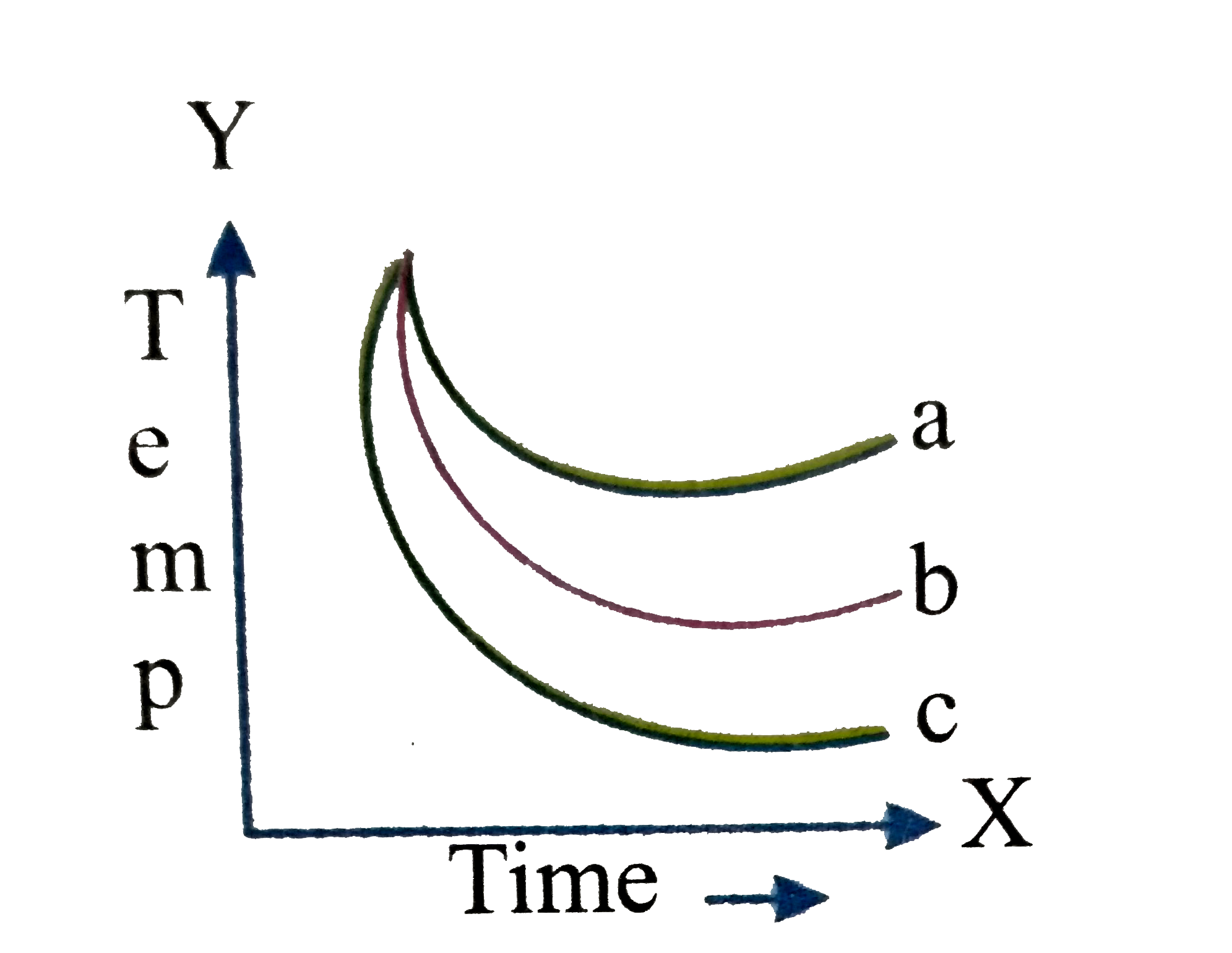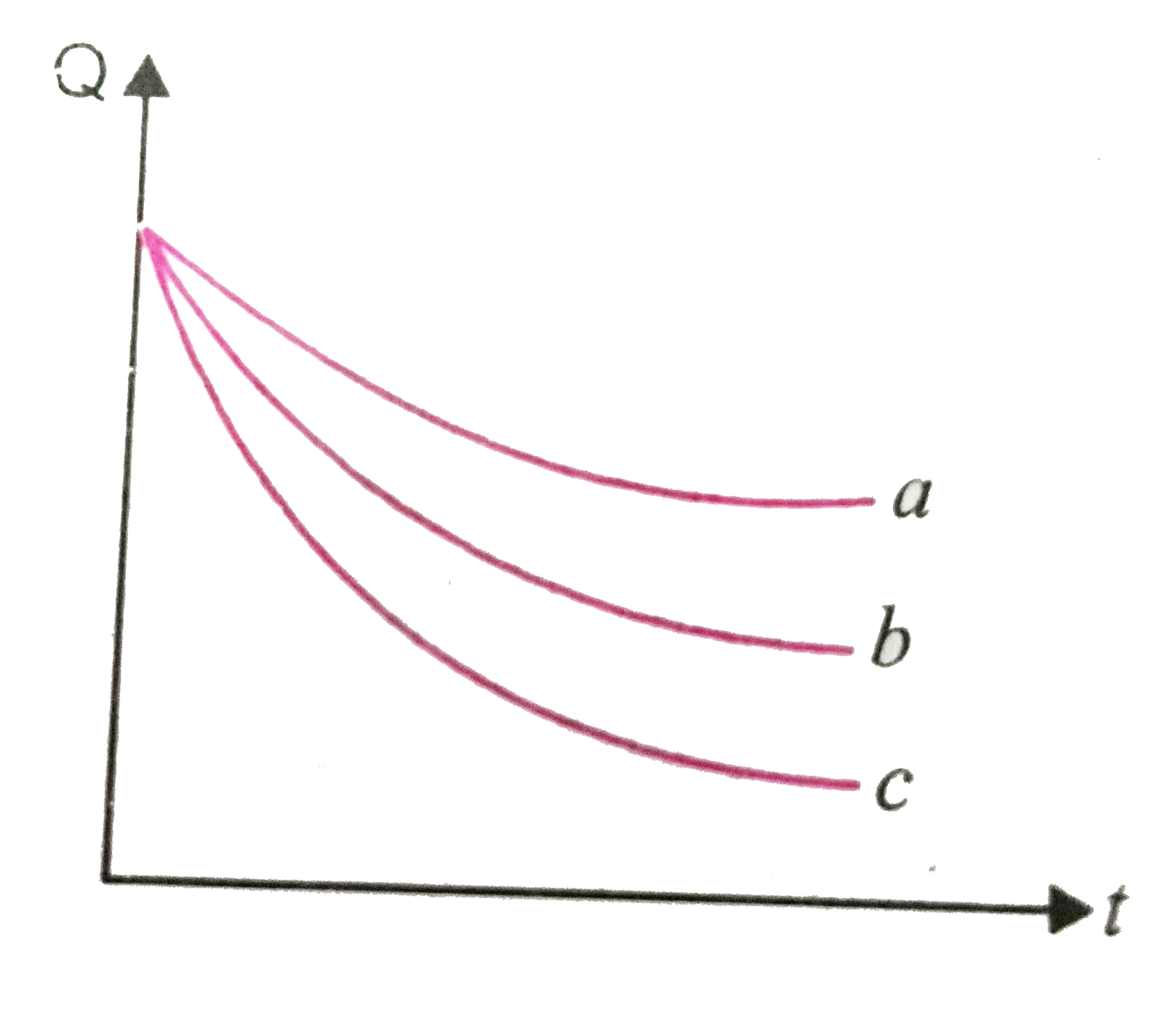Cooling graphs are drawn for three liquids a,b and c The specific heat is maximum for liquid
 .
.
a
b
c
for all the three a,b and c
The correct Answer is:A
Step by step video, text & image solution for Cooling graphs are drawn for three liquids a,b and c The specific heat is maximum for liquid . by Physics experts to help you in doubts & scoring excellent marks in Class 11 exams.
Updated on:21/07/2023Topper's Solved these Questions
- TRANSMISSION OF HEATBOOK - NARAYNACHAPTER - TRANSMISSION OF HEATEXERCISE - LEVEL -1 (C.W)
1 Videos
- TRANSMISSION OF HEATBOOK - NARAYNACHAPTER - TRANSMISSION OF HEATEXERCISE - LEVEL (C.W)
13 Videos
- TRANSMISSION OF HEATBOOK - NARAYNACHAPTER - TRANSMISSION OF HEATEXERCISE - LEVEL-II(C.W)
27 Videos
- THERMODYNAMICSBOOK - NARAYNACHAPTER - THERMODYNAMICSEXERCISE - Exercise
187 Videos
- UNITS AND MEASUREMENTSBOOK - NARAYNACHAPTER - UNITS AND MEASUREMENTSEXERCISE - STATEMENT TYPE QUESTION
23 Videos
Similar Questions
Cooling curves are drawn for three liquids a,b,c, shown in fig. for which liquid specific heat is least?

View SolutionEqual masses of three liquids are thoroughly mixed. The specific heat capacities of the liquids ar s1,s2 and s3 and their temperatures t1,t2 and t3 respectively. Find the temperature of the mixture.
View Solution
Knowledge Check
A "flow calorimeter" is used to measure the specific heat of a liquid. Heat is added at a known rate to a stream of the liquid as it passes through the calorimeter at known rate, then a measurement of the resulting temperature difference between the in flow and the out flow points of the liquid stream enables us to compute the specific heat of the liquid. A liquid of density 0.85 g/cm3 flows through a calorimeter at the rate of 8.0 cm3/s. heat is added by means of a 250 watt electric heating coil, and a temperature difference of 15∘C is established in steady state conditions between the in flow and out flow points.
Q. Specific heat of the liquid isA0.59cal/g.∘CB4cal/g.∘CC2cal/g.∘CD9cal/g.∘CA "flow calorimeter" is used to measure the specific heat of a liquid. Heat is added at a known rate to a stream of the liquid as it passes through the calorimeter at known rate, then a measurement of the resulting temperature difference between the in flow and the out flow points of the liquid stream enables us to compute the specific heat of the liquid. A liquid of density 0.85 g/cm3 flows through a calorimeter at the rate of 8.0 cm3/s. heat is added by means of a 250 watt electric heating coil, and a temperature difference of 15∘C is established in steady state conditions between the in flow and out flow points.
Q. Rate of heat absorption per unit specific heat capacity isA100g-.∘C/sB102g-.∘C/sC50g-.∘C/sD10.2g−.∘C/sA "flow calorimeter" is used to measure the specific heat of a liquid. Heat is added at a known rate to a stream of the liquid as it passes through the calorimeter at known rate, then a measurement of the resulting temperature difference between the in flow and the out flow points of the liquid stream enables us to compute the specific heat of the liquid. A liquid of density 0.85 g/cm3 flows through a calorimeter at the rate of 8.0 cm3/s. heat is added by means of a 250 watt electric heating coil, and a temperature difference of 15∘C is established in steady state conditions between the in flow and out flow points.
Q. Rate of heat added per second isA4.18 J/sB59.8 cal/sC5 cal/sD90 cal/2
Two containers contain two liquids A and B. The mass of liquid A is half the mass of liquid B. Both of them are heated to that extent so that the increase in the temperatures of the liquids is the same. The heat supplied for this purpose in liquid A is double that in the case of liquid B. Find out the ratio of the specific heat of A and B.
View SolutionThe solid and liquid have only one specific heat because of there is
View SolutionThe solid and liquid have only one specific heat because of there is
View SolutionWhich of the following has the highest specific heat?
View SolutionWhich of the following has the highest specific heat?
View Solution
